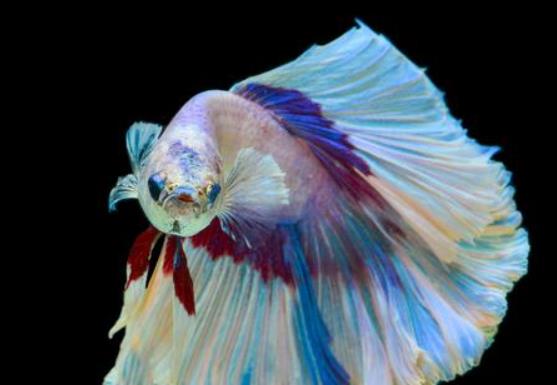To determine if a betta fish is near death, it’s essential to comprehensively observe abnormalities in appearance, behavior, and physiological responses. Here are key indicators and response recommendations:

I. Abnormal Behavioral Signs
Drastic Activity Decline
Stays at the tank bottom for extended periods or lies on its side, unresponsive to stimuli (e.g., mirror provocation).
Loses balance while swimming, exhibiting abnormal postures like "upright swimming" or rolling.
Respiratory Abnormalities
Gill covers open and close significantly faster (normal rate: ~60–80 times/minute), with gills turning dark red or brown.
Loss of Appetite
Refuses food for multiple days, even showing no interest in live prey.
II. Noticeable Appearance Changes
Color Fading
Vibrant colors fade rapidly, with white spots or black patches appearing on scales.
Fin Damage
Caudal/dorsal fins suddenly tear, shrink, or stick together, accompanied by redness.
Body Lesions
Pinecone scales (scales sticking out), skin ulcers, or excessive mucus secretion.
III. Signs of Physiological Decline
Organ Failure Indicators
Abnormal abdominal swelling (ascites) or spinal curvature.
Cloudy, bulging eyes with delayed reactions.
Reduced Environmental Tolerance
Shows severe stress from minor water quality fluctuations (e.g., after water changes).
IV. Special End-of-Life Symptoms
Violent Struggling
Repeatedly crashes into the tank walls or spins rapidly before going still.
Muscle Rigidity
Body hardens quickly after death, with gill covers difficult to open.
Response Recommendations
Emergency Treatment
Isolate the sick fish, raise the temperature to 28–30°C, and add aquarium salt (1g/L).
Stop feeding and change 1/3 of the water daily to improve water quality.
Prognosis Judgment
If the "triad" of side lying, weak breathing, and color fading appears, the survival rate is extremely low.
Intervene immediately at the first signs of trouble; for advanced symptoms, focus on relieving suffering.
